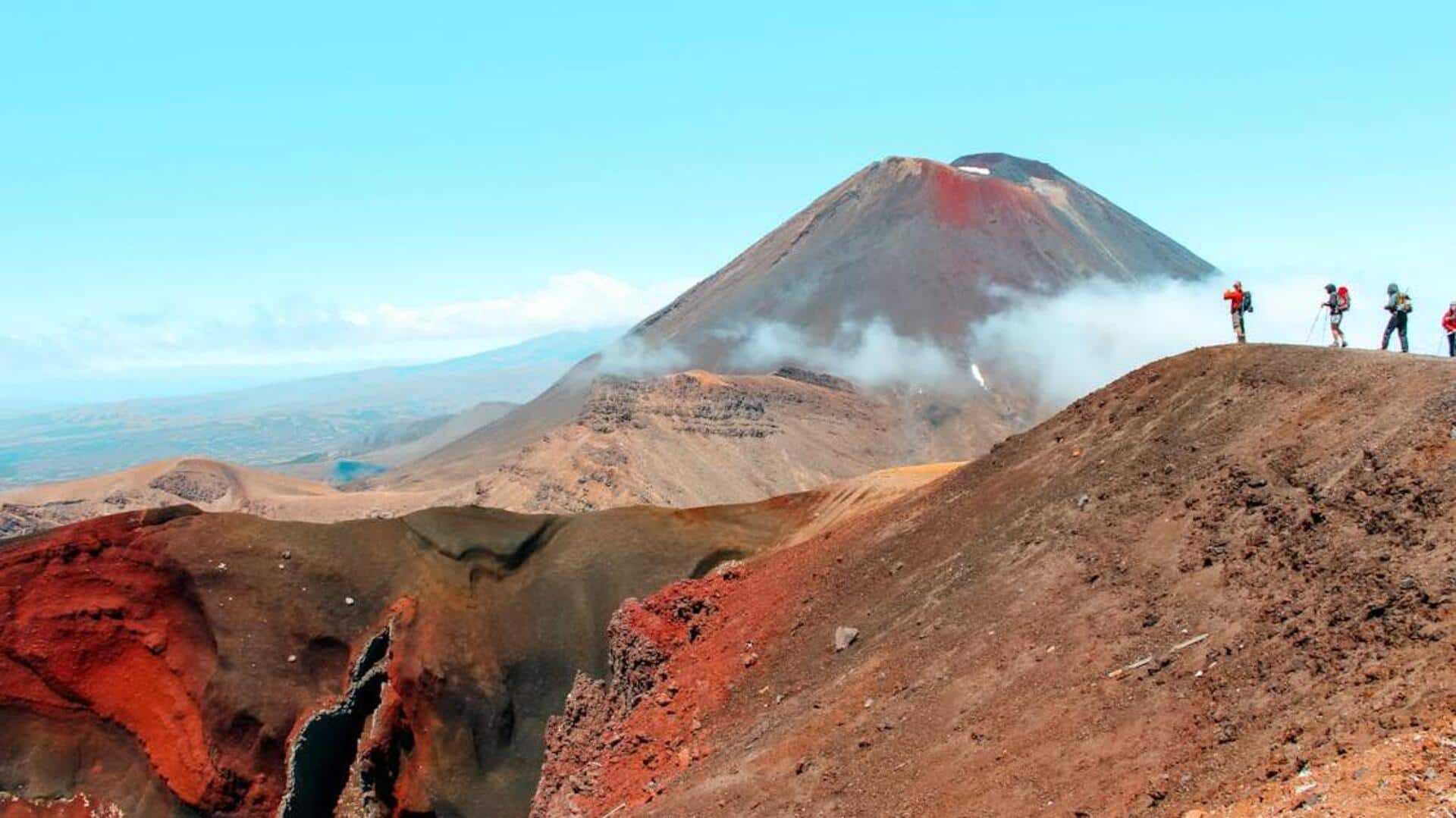
How to prepare for a volcano trekking trip
What's the story
African volcano trekking is an ideal adventure for those looking for some thrilling summit ascents.
The continent has some of the most mind-blowing volcanic landscapes, giving trekkers memories of a lifetime.
From the towering heights of Mount Kilimanjaro to the active lava lake of Mount Nyiragongo, every trek comes with its own challenges and rewards.
Here's looking at key insights into preparing for and experiencing these remarkable treks across Africa's volcanic terrains.
Altitude preparation
Preparing for high altitude challenges
Trekking at high altitudes requires due preparation because of the lack of oxygen.
Acclimatization is important to prevent altitude sickness, which can also happen to seasoned trekkers.
A slow ascent and extra days spent at mid-altitudes can help your body adapt.
Staying hydrated and keeping a steady pace are important tactics for handling altitude-related challenges during your trek.
Gear essentials
Essential gear for volcano treks
Proper gear is imperative while heading for an African volcano trek.
As the terrain can be uneven, sturdy hiking boots with good ankle support are a must.
Since temperatures can vary from base to summit, layered clothing makes it easier to manage them.
A reliable backpack, trekking poles, and a headlamp are also a must.
Packing all essential gear will make your trek worthwhile.
Terrain navigation
Navigating diverse terrain safely
Volcano treks usually require you to navigate through different terrains, from rocky paths to those with loose volcanic ash-slopes.
Knowing the terrain of each volcano is essential to keep yourself safe and have a good time.
An experienced local guide can offer valuable insights into trail conditions and potential hazards.
Being mindful of weather changes and adjusting your plans accordingly makes trekking safer.
Volcanic landscapes
Experiencing unique volcanic landscapes
Each of the African volcanoes promises unique landscapes that will mesmerize trekkers with their beauty and geological characteristics.
Mount Kilimanjaro features diverse ecosystems as you climb through rainforests, moorlands, and alpine deserts before hitting its snow-capped peak.
Meanwhile, the active lava lake of Mount Nyiragongo offers an amazing sight at nightfall when the glowing lava lights up the entire area.
Summit tips
Tips for successful summit ascents
Reaching the summit requires physical endurance and mental determination. Starting early allows ample time for ascent, avoiding afternoon weather changes.
Careful planning regarding timing is crucial to safely reach the goal without rushing or risking exhaustion.
The journey fosters camaraderie among climbers, creating lasting memories and fulfilling dreams through teamwork and mutual support, making every step worthwhile.